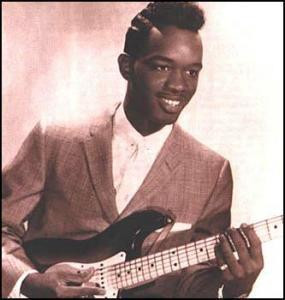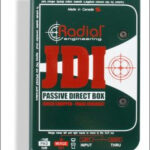Johnny “Guitar” Watson was more than just a bluesman; he was a musical chameleon, constantly reinventing himself and his sound throughout his illustrious career. From pioneering instrumental guitar tracks like “Space Guitar” to the funky grooves of “Ain’t That a Bitch,” Watson’s discography is a testament to his boundless creativity and enduring influence. Born John Watson Jr. on February 3, 1935, in Houston, Texas, his journey took him from the blues clubs of the South to international stages, leaving an indelible mark on music history. This exploration delves into the captivating world of Johnny “Guitar” Watson songs, uncovering the depth and breadth of his musical genius.
 Johnny "Guitar" Watson performing with guitar
Johnny "Guitar" Watson performing with guitar
From Texas Blues Roots to “Space Guitar” Innovation
Watson’s early life was steeped in music. His father, a pianist, and his grandfather, a guitar-playing preacher, provided his initial musical education. Inspired by the dynamic stage presence of T-Bone Walker and the guitar stylings of Clarence “Gatemouth” Brown, the young John Watson was quickly immersed in the vibrant Texas blues scene. By the age of fifteen, he was already sharing stages with blues luminaries like Albert Collins and Johnny Copeland, honing his skills and developing his unique sound.
In 1950, a move to Los Angeles with his mother opened up new musical avenues. He quickly became a fixture in the city’s thriving music scene, initially playing piano and singing with Chuck Higgins’ band in 1952. Watson himself recalled the era as a melting pot of genres, stating, “Wardell Gray, Dexter Gordon, Dizzy Gillespie, Charlie Parker, Count Basie and Illinois Jacquet, they were all playing around, and jazz and blues were all mixed up.” This eclectic environment undoubtedly shaped his genre-bending approach to music.
The year 1954 marked a pivotal moment in Watson’s career with the release of “Space Guitar.” This groundbreaking instrumental track showcased his innovative guitar techniques, foregoing a pick to create a raw, visceral sound. “Space Guitar” was revolutionary for its time, pioneering the use of guitar feedback and reverb, techniques that would later be embraced and popularized by rock guitarists like Jimi Hendrix. This song cemented Watson’s reputation as a guitar innovator and set the stage for his future explorations.
Embracing the “Johnny Guitar” Persona and Chart Success
While “Space Guitar” highlighted his instrumental prowess, Johnny “Guitar” Watson also found success with vocal performances. In 1955, his cover of Earl King’s “Those Lonely, Lonely Nights” became his first charting single, demonstrating his ability to interpret and personalize existing songs. Around this time, inspired by the western film Johnny Guitar, starring Joan Crawford, he adopted the moniker Johnny “Guitar” Watson. This stage name, resonating with the image of a cool, reformed gunslinger, perfectly complemented his evolving stage persona and stuck with him for the rest of his career.
In 1957, Watson first released “Gangster of Love,” a song that would become his signature tune, though its journey to iconic status was gradual. Initially released on the Keen label, it was re-released in 1962 by King Records and again in 1978, each time gaining more traction. The song’s infectious groove and swagger captivated audiences and fellow musicians alike. Steve Miller notably embraced “Gangster of Love,” covering it on his 1968 album Sailor and referencing it in later hits like “Space Cowboy” and “The Joker.” This reciprocal musical admiration even led to Watson releasing an album titled The Gangster is Back in 1975, following Miller’s song “The Gangster is Back” in 1971, a testament to the song’s enduring appeal and cross-genre influence.
Beyond Solo Stardom: Sideman and Zappa Collaborations
Johnny “Guitar” Watson’s talents extended beyond his solo work. He was a sought-after sideman and touring partner, collaborating with a diverse range of artists. His partnership with Larry Williams was particularly fruitful, resulting in tours and two collaborative albums. He also lent his skills to Little Richard, Don and Dewey, The Olympics, and Johnny Otis, further solidifying his reputation within the R&B and blues communities.
A significant and unexpected collaboration came with Frank Zappa. Zappa credited Watson’s 1956 song “Three Hours Past Midnight” as a pivotal inspiration for his own guitar playing. This admiration led to Watson appearing on four of Zappa’s records, including One Size Fits All, the final studio album with the Mothers of Invention. This unlikely pairing showcased Watson’s versatility and his ability to seamlessly integrate into diverse musical landscapes, bridging the gap between blues, R&B, and Zappa’s avant-garde rock.
Funk Reinvention and Iconic Catchphrases
As the musical landscape shifted in the 1970s, with disco and funk gaining prominence, Johnny “Guitar” Watson once again demonstrated his remarkable ability to adapt and innovate. He reinvented his image and sound, embracing the funk movement with full force. Adopting a flamboyant stage persona, complete with pimp-inspired attire, Watson signed with DJM Records and unleashed a string of funk-infused albums, including Ain’t That a Bitch in 1976 and A Real Mother for Ya the following year.
These albums were pivotal in Watson’s career reinvention and in the broader funk movement. He became a key figure, influencing artists like Sly Stone and George Clinton. Watson’s catchy phrases, like “bow wow wow yippi-yo yippi-yay,” became iconic, famously adopted by Clinton in Parliament-Funkadelic’s hit “Atomic Dog.” This phrase, and Watson’s music in general, has been extensively sampled by hip-hop artists, including Snoop Dogg, Bow Wow, Ice Cube, Dr. Dre, Jay-Z, and Mary J. Blige, demonstrating the lasting impact of his funk era songs on contemporary music.
Musical Mastery Beyond Guitar: A Multi-Instrumentalist
While known as “Guitar” Watson, his musical talents extended far beyond the six-string. A gifted composer, producer, and arranger, he contributed drums, keyboards, bass, and saxophone to many of his own recordings, particularly during his successful period with DJM Records. This multi-instrumentalism highlights his deep musical understanding and control over his artistic vision. On tour, he led a six-piece band, The Watsonian Institute, complete with a horn section, further showcasing his commitment to rich, layered musical arrangements in his live performances.
Later Years and Enduring Legacy
The 1980s brought personal challenges, including the suicide of his friend and bandmate Larry Williams, which seemed to impact Watson’s presence in the US music scene. While US appearances became less frequent, he maintained a strong touring presence in Europe and Japan. After his 1984 charting single “Strike on Computers,” a decade passed before he returned to the charts with “Bow Wow” in 1994. Despite periods of lower visibility in the mainstream US charts, his influence remained strong, as evidenced by his guitar work on Dr. Dre’s Grammy-winning track “Let Me Ride” in 1993.
Tragically, Johnny “Guitar” Watson’s final performance took place on May 17, 1996, in Yokohama, Japan. While performing his hit “Superman Lover,” he suffered a heart attack on stage and passed away shortly after. His dramatic exit seemed to echo his larger-than-life persona, and his wish to die on stage, as recounted by his bandmates, further cemented his legendary status.
Johnny “Guitar” Watson’s influence on music is undeniable. Guitarists like Jimmie and Stevie Ray Vaughan revered him, and he profoundly impacted figures like Jimi Hendrix, Steve Miller, and Frank Zappa. Bobby Womack called him “the most dangerous gunslinger out there,” while Etta James, who toured with Watson early in her career, declared, “They call Elvis the King; but the sure-enough King was Johnny ‘Guitar’ Watson.” Exploring Johnny “Guitar” Watson songs reveals not just a collection of tracks, but a journey through the evolution of blues and funk, guided by a true musical innovator. His discography remains a rich treasure trove for anyone seeking to understand the dynamic range of this genre-bending icon.

